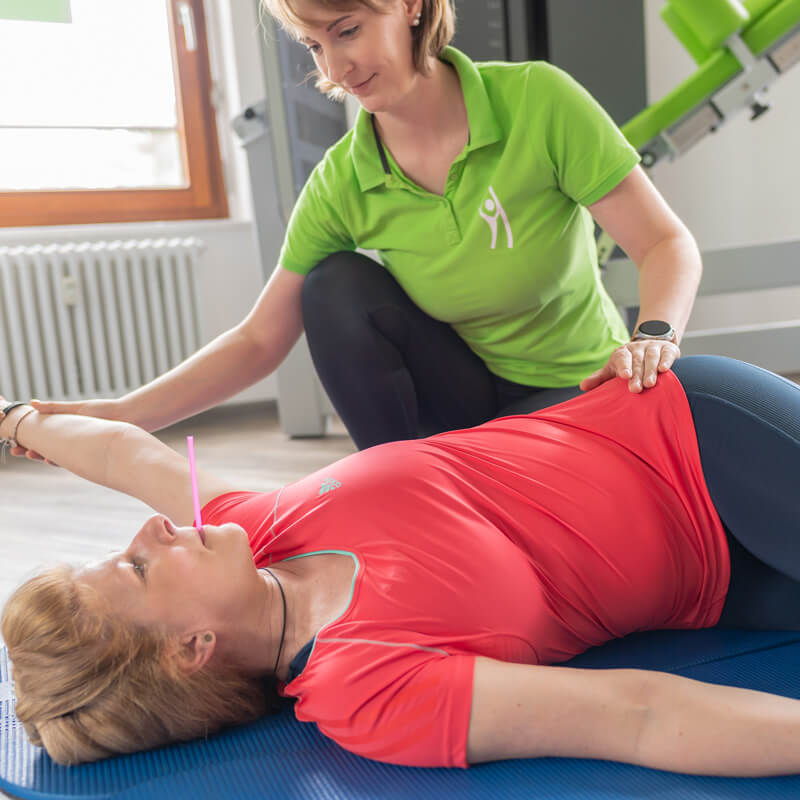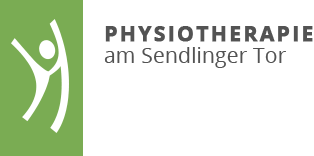Respiratory therapy Munich:
Take a deep breath!
Your practice for respiratory therapy in the center of Munich. Our physiotherapists will be happy to treat you and show you the right exercises for your well-being.
ø4.9/5 rated by 82 patients on Google

Treatment
Respiratory therapy is just as relevant for singers and people who have to talk a lot at work as it is for patients with bronchial asthma or other lung diseases. Correct breathing not only affects the lungs, but also has a mechanical effect on the diaphragm, the muscles of the upper body and the speech apparatus. Breathing correctly supplies the body with sufficient oxygen and regulates carbon dioxide levels. If patients change their breathing technique, this also has a positive effect on the cardiovascular system – blood pressure and heart rate improve. The entire sensory system and thus the nervous system also benefit. Respiratory therapy in Munich is individually tailored to the symptoms, but helps to maintain or improve performance, especially in the case of COPD or asthma.
Patients suffer from impaired lung function, particularly after infection with the Covid-19 virus. They quickly run out of breath, are significantly less efficient than before and often struggle with persistent phlegm in addition to symptoms of exhaustion and fatigue. Here in particular, targeted respiratory therapy helps to improve lung function and thus positively influence the overall condition.
Physiotherapeutic respiratory therapy is precisely tailored to the needs of patients with lung problems. A whole range of measures are available for treatment, which are used for different clinical pictures.
In addition, mental and physical processes can be consciously influenced by controlling the breath. Breathing techniques can help to recognize and improve performance pressure, anxiety and stress, as they often lead to shallow breathing in many people. The reduced oxygen uptake and distribution in the body reduces the performance of organs, the brain and the muscles. With the right physiotherapy, we work together to counteract these symptoms. This method can also be used to successfully treat various pain conditions.
Disease patterns
Respiratory therapy mainly pursues the following goals:
- Dissolution of mucus in the lung area
- Ventilation of all lung sections
- Improving gas exchange in the lungs
- Prevention of pneumonia
- Stabilizing the bronchial system
- Supporting the lungs in obstructive diseases such as asthma, COPD, chronic bronchitis and cystic fibrosis
Respiratory therapy is used for the following conditions:
- COPD
- Bronchial asthma
- Consequences of a Covid-19 infection (post-Covid and long-Covid)
- Chronic bronchitis
- Cystic fibrosis
- Pulmonary fibrosis
- Pulmonary emphysema
- Chest injuries such as rib fractures etc.
- Tension of the musculoskeletal system
- Depression, sleep disorders, burnout, stress, exhaustion and lack of energy
- Pleurisy
Other key aims of respiratory therapy in Munich are to improve oxygen uptake, deflate the lungs and strengthen the respiratory muscles. Learning special breathing and coughing techniques as well as stretching and strength exercises also help patients to strengthen their respiratory muscles and improve mobility – especially of the chest.
Billing (by health insurance company)
When the air gets tight, patients receive a special therapy concept after medical diagnosis, with the help of which correct breathing is to be learned.
Both private and statutory health insurance companies cover the costs of prescribed respiratory therapy as part of physiotherapy. All services are listed in the list of remedies, whereby so-called aids such as respiratory therapy or inhalation devices for home use are also paid for by the health insurance fund.
A lung specialist or GP can issue a prescription for respiratory therapy and bill the statutory health insurance fund for it under the contractual benefits catalog. As a rule, six therapy sessions are prescribed with respiratory therapy as the primary remedy and a heat application as a supplementary remedy. In the case of chronic illnesses, depending on the diagnosis, it is possible to obtain permanent prescriptions for respiratory therapy from the doctor.
Background / History
Breath therapy is a very old alternative healing method in which meditative techniques for conscious breathing are combined with physical treatment. Its roots lie in the millennia-old knowledge and experience of Tai Chi, Buddhism, Tao and yoga. The power of correct breathing only began to attract more attention in Europe at the beginning of the 20th century. Various elements of dance, gymnastics and psychotherapy were combined with Far Eastern knowledge in the breathing therapy of the Western world.
Renowned pioneers of respiratory therapy include Anderson, Schlaffhorst, Dürckheim, Schmitt and Glaser. Particularly interesting: Hildegard von Bingen is said to have already possessed extraordinary knowledge of certain breathing techniques. Without them, her vocal compositions would probably not have been possible. Ilse Middendorf also developed her own breathing concept, which focuses on conscious self-awareness and self-awareness of the breath.
Together with psychoanalysts, Elsa Gindler developed a new type of breathing program after the Second World War, according to which purely mechanical breathing was used extensively in gymnastics – quite rightly, as her successes with the new breathing technique proved.
